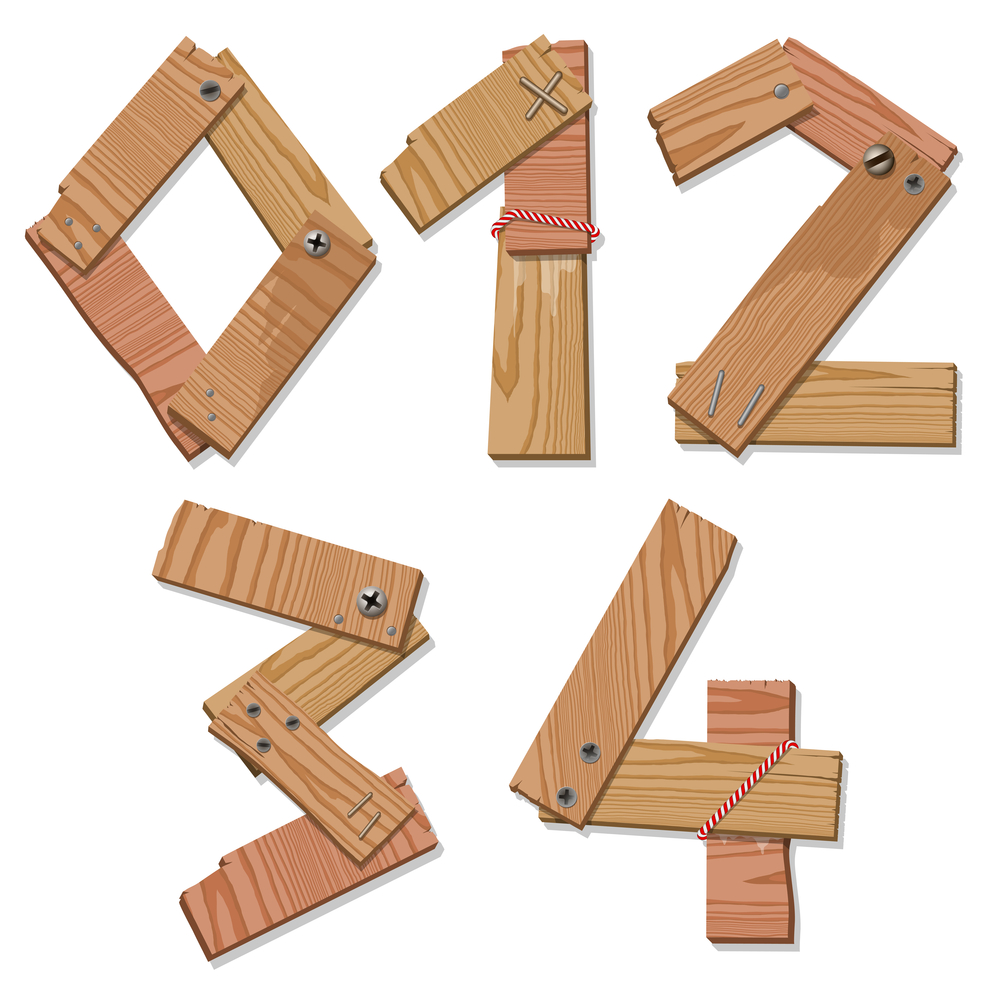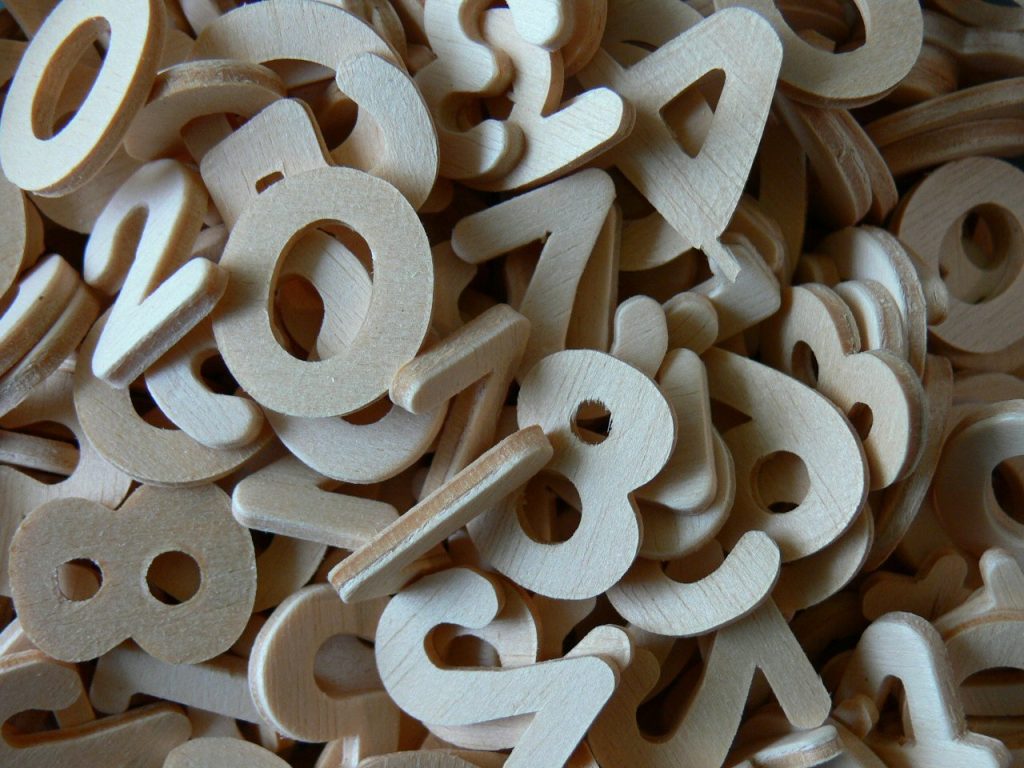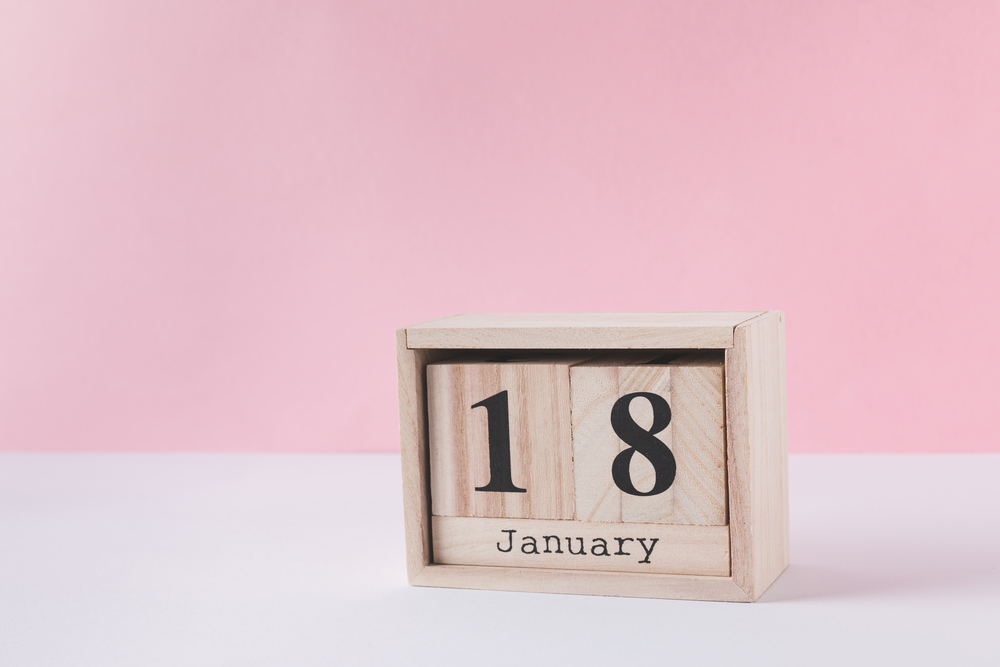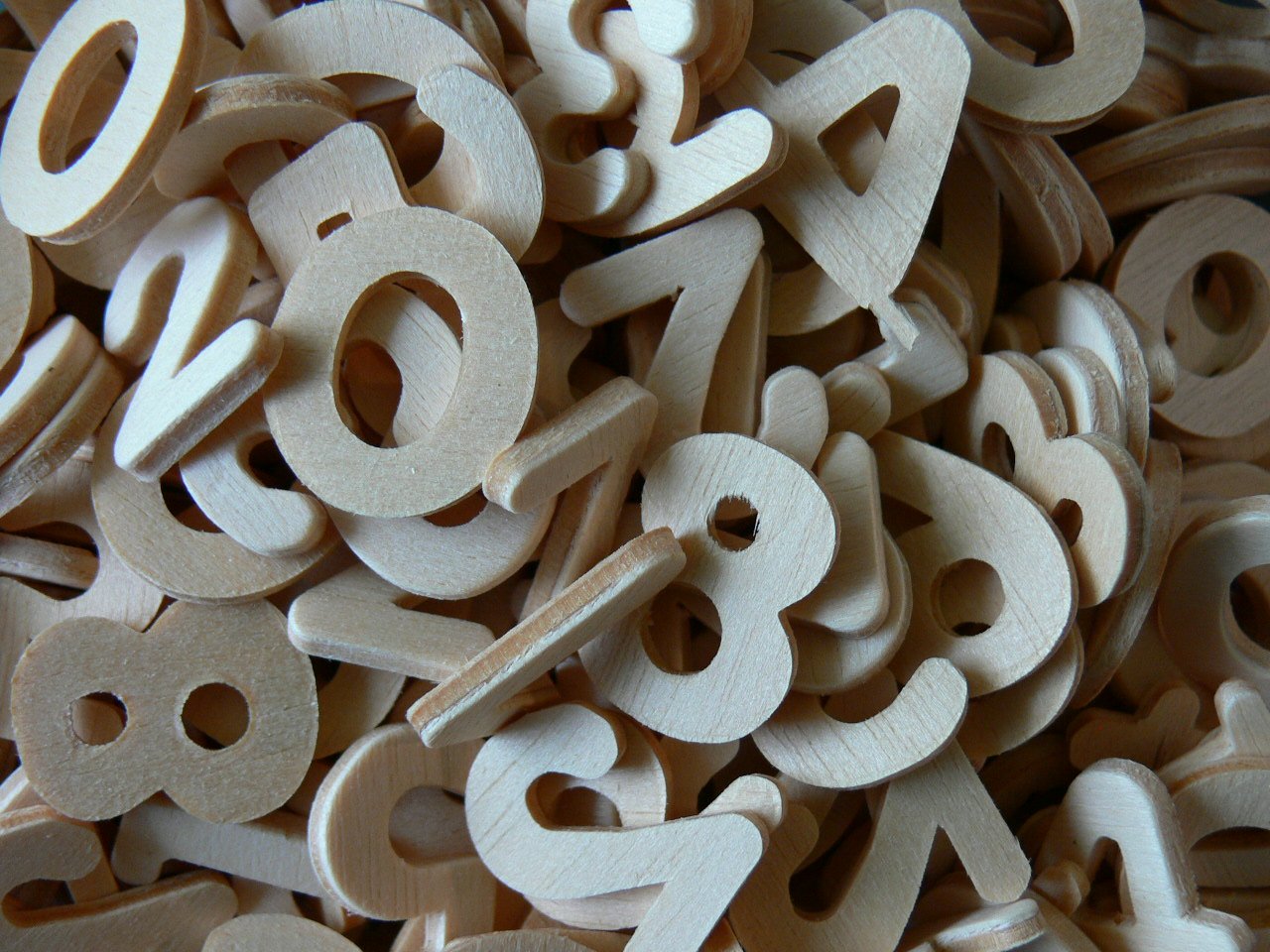Wood cutout numbers are often used in crafts, home make projects, and for décor, mounted directly to the wall. These various wood numbers can be made from various sizes of plywood materials, although 1/8” to 1/4” luan plywood is the most common. These can be purchased at a number of locations, such as craft stores like Michaels or Hobby Lobby, as well as home improvement centers like Home Depot.
Today, these commercially manufactured letters and numbers are laser cut, although in the past they were predominantly cut with a CNC router or die cut. Each method has its advantages and disadvantages, affecting how the finished letter looks.
- Laser cut – Laser cutting is highly adaptable, allowing the creator of the letters a lot of artistic leeway. Scrollwork, leaves, and flowers can easily be added, especially if one can combine available clipart into a final image. However, laser cutting is a burning process where the concentrated light of the laser burns through the wood. So, the finished piece always has a burnt edge.
- CNC Router cut – A CNC router, like any other CNC machine, is controlled by a computer, providing great accuracy. However, the process is both slower than laser cutting and inside angles are limited by the diameter of the rotating router bit. Typically, the smallest inside radius is 1/8”. Because the CNC router works slower than laser cutting, it is a more expensive process. However, the edges of the cutout letters and numbers are extremely clean.
- Die cut – Die cutting requires making a rule die, which is a thin strip of flexible tool steel, that is highly sharpened. It is shaped to the desired outline and the back edge of the rule die is pounded or pressed into a block to hold it. When making the cut, the rule die is laid on the wood to be cut, sharp side down and it is pressed into the wood, cutting through it. While a new rule die makes a clean cut, as the die becomes dull, the edge of the cut tends to round over and the wood fibers break, more than cut.
Of course, anyone wanting to make and paint their own wood letters and numbers can use any of these methods, if they have the available equipment. But none of those pieces of equipment are in the average home woodworking or paint shop.

Patterns for Making Wood Numbers and Letters
The big problem with making one’s own fonts for wood numbers and letters at home is laying out the pattern. Most fonts are actually drawn out in large size, with extreme accuracy; the font is then resized for use in our computers and for sign making. One can draw the numbers and letters out with markers, a ruler, compass and other drafting equipment, but doing so requires a good understanding of technical drawing.
Another option is to have a sign shop make a pattern on their vinyl sign cutter. This would allow for just about any color, size font, letters and numbers that one might want to add; but it could be rather expensive as well. The material that these sign shops choose to use isn’t cheap and they charge accordingly for their work.
Another, less usual means of creating a pattern is simply to design and save it on the computer and then blow it up. I used to do this a lot for hand-painted signs and banners. Back in school when I started, I would create a transparency of the lettering and use one of the old transparency projectors that we used to have in the schools. Since then, I’ve upgraded to a video projector, allowing me to save the view and project directly from my computer onto the material that I’m going to be cutting.
The one real problem with using a video projector for this is what is known as “parallax.” This is the effect that happens with a video projector, when the projector isn’t lined up exactly perpendicular to the screen, or in this case, to the plywood that we want to trace or paint our pattern onto. If the projector is high or low of center or over to either side, the image projected won’t be an even rectangle, but rather a parallelogram.
To prevent this problem, careful setup is required. Check the sizes of the projected image, measuring the height from corner to diagonally opposite corner. If those measurements are equal, then the projector is set up properly to ensure that all letters and numbers on display will be the same size. If not, either move the projector or use the projector’s parallax adjustment as needed.
Once the projector is set up and ready and the image is projected onto the material the letters are going to be ready to be cut out of, the letters can be traced with a pencil, using a straightedge and compass.
It can be extremely useful to have what’s known as an adjustable curve for making smooth lines for the curved parts of letters. Unfortunately, these are not easy to buy or come by anymore, as few people choose to do technical drawing by hand anymore, preferring to do it on the computer. But a flexible strip of wood can become a fairly good substitute. It may be necessary to have some help in order to hold the curve in place while tracing the line.
Cutting Wood Letters and Numbers
The letters and numbers can be cut out with either a jigsaw or scroll saw. The big problem to watch out for is splintering of the material, while cutting. There are a number variety of methods that can be used in order to help prevent this splintering:
- Trace the line with a knife first, cutting through the face veneer; then be sure to cut on the outside of the line
- Use a very sharp, fine toothed saw blade in a jigsaw
- Draw the design on the back of the wood, in reverse, then cut from the back. That will ensure that any splintering is on the back side
- Cut far enough outside the line so that any splintering will not extend into the letter, and then use power sanders to finish shaping the numbers and letters
Cutting with a Pattern
Another means of cutting out letters and numbers, if you find that a lot of the same will be made, is to first cut out a very accurate pattern of letter, out of some sort of plywood product, such as MDF. The fine grain and smooth surface of MDF is ideal for this, but other ply wood products, such as OSB work well too.
With the letter pattern made, attach it to the surface of the material being cut out, using double-sided masking tape to hold it in place. Then use a straight router bit with a guide bearing to transfer that letter outline to the wood that will be used for the letters.

Wooden numbers, Laineys Repertoire
Cutting Wood Slat Letters and Numbers
Another option that some people like to do with larger numbers and letters is to choose to make them out of wood slats, especially slats of reclaimed or unfinished wood, such as pallet wood. This can look especially nice if the wood varies in color and condition. Individual slats can even be stained in different colors to create a greater difference in color between them.
For projects on this, start by making a backing board out of some plywood material. This needs to have a neat, clean edge to it, as it will also be the pattern for cutting out the slats.
Lay out the slats face down on the workbench, ensuring that they cover a large enough area for the entire letter or number. Then spread wood glue on the backing board and lay it on the strips of wood, reversed, aligning it to take the best advantage of the slats’ grain and coloring. Check to ensure that the slats are still butted up against each other and that they haven’t shifted, then nail through the backing board into the slats, attaching everything together.
After allowing the wood glue to dry, the outline of the slats can be cut out with a straight router bit, with a top-mounted bearing. Raise the height and width of the slat assembly slightly off the height of the bench, on blocks, while doing this, so that the bench doesn’t become damaged by the router bit.
Flip the assembly over and round over the edges of the letter or add the number with a 1/8” or 1/4” roundover bit. Then finish painting the letters as the color desired.

Mounting Wood Numbers and Letters
Wood letters and wooden numbers are normally mounted to the wall with double-sided foam adhesive tape. This provides a good bond, is unobtrusive and attractive, and prevents the letters and wooden numbers from shifting, like paintings tend to do. Be sure to use enough of the tape so that it can support the weight of the letters.
For fonts of large letters or numbers, like those made with wood slats, it may be necessary to add something to rout keyhole in the back of the back on the backing board, as the double-sided foam tape may not be strong enough to support the font-weight.





